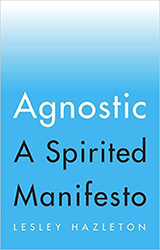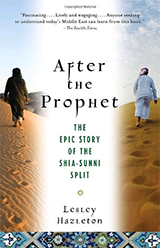 This is a long post, but then Shi Shi beach is long. It’s one of the wildest, most forlorn, most beautiful beaches in the world, four hours by car and ferry from Seattle, and then another hour slogging through psychedelically viscous deep mud, ending in an ohmygod slither down a steep cliff, clinging to tree roots as you go, and then… the magnificent wilderness of the Pacific Ocean.
This is a long post, but then Shi Shi beach is long. It’s one of the wildest, most forlorn, most beautiful beaches in the world, four hours by car and ferry from Seattle, and then another hour slogging through psychedelically viscous deep mud, ending in an ohmygod slither down a steep cliff, clinging to tree roots as you go, and then… the magnificent wilderness of the Pacific Ocean.
Usually I come here in winter, after a storm, when the water wells up so high that you swear it’s going to swamp you like a tsunami wave. The pounding of it makes the sand beneath your feet reverberate like an ongoing earthquake (seriously: it registers on seismic sensors.) With the wind high and rain flying at you, there’s no telling where water ends and sky begins. Spume lifts in huge curtains off the tops of the waves; giant balls of foam race along the beach as though propelled by some inner force; the roar of the water drowns out anything but shouting. To stand on Shi Shi at such times is thrilling and humbling and terrifying all at the same time.
The ocean tosses up whatever it carries here, and some of it comes back home with me. Buoys torn loose from crab pots; tangled nets and long lines of rope; even, once, a blue hardhat that belonged to someone called Beata Riggo. I know this because the name is there, carefully marked in indelible ink on the mesh webbing inside the hat. A Norwegian name, I think, though I’m not sure. The hat must have gone overboard. But it wasn’t until last week that it occurred to me that its owner might have gone overboard too.
I was at Shi Shi on a sunny summer day, for a change. Yet there was a certain overcast to the sun, at least in my mind, because now a different kind of flotsam is coming ashore. The ocean has carried the debris from the tsunami that ravaged the eastern coast of Japan over a year ago, and now it’s beginning to arrive on the west coast of America, ten thousand miles away. A fishing boat washed ashore this spring on Vancouver Island; a floating dock on the Oregon shore. And at Shi Shi? I kind of didn’t want to know.
But the indomitable Jen Graves, art critic of The Stranger, was braver than I. Like me, she’d been part of an kind of ad hoc temporary collective of art and tech types convened a couple of weeks ago to explore problems they might collaborate on. The tsunami debris was identified as one such problem: how to contain, it, how to handle it and collect it and dispose of it. But for me, the problem was quite the opposite. It was how to conserve it.
What Jen and I saw washing up on the Pacific coast is what remains of people’s lives. It’s what remains of people who died. There was stuff on the beach that day I’d never seen there before. Nothing as dramatic as a boat or a floating dock, but small remnants of humanity like a piece of wood that might have been part of a broomstick, but with many layers of multi-colored paint on it, which made it seem somehow ceremonial. Or matte black spheres that looked at first like mines, but turned out to be plastic floats from Japanese fishing nets. Or – the bane of our oceans – Styrofoam, brittle and yellowed by salt and time.
This is only the beginning. More will come. I can see that it’s an environmental problem, of course, but surely it’s also a cultural one, even an existential one. This is, after all, more than mere debris. It’s testimony. Testimony to other people’s lives, to the power of the ocean, to the conditionality of our own existence. To treat it as a problem that can be “solved” seems to me insufficient. Surely a group of artists and technologists could find a more creative “solution”?
An interpretable site? A memorial? An installation? I don’t know. But another country’s tragedy as our debris? I think we can do better than that. And perhaps we will. We meet again tonight, this time open to the public, and I’ll be wearing Beata Riggo’s hardhat – not because I look good in it (in fact I look idiotic), but as a reminder, at least to me, that we need to conserve not only the environment, but also memory. That we need to respect the power of the ocean rather than try to control it. That we need to be thrilled and humbled and terrified all at the same time.






Beautiful, Lesley. Hope to make it this evening.
Hi Lesley. Lovely reflections on what remains. Yesterday, I visited Ampersand in Portland. This shop contains old photographs and ephemera from the 20th century displayed in a pristine modern setting. I felt comforted while holding odd collections of other people’s once personal belongings. Will be great to hang out with you in your hard hat tonight to unravel ideas & discover more questions.
God Lesley, you are such a romantic. I love the lingering of poetic sadness in this post. I once visited an abandoned afghan refugee camp and felt the same heart break.
True. There’s few things more dispiriting than a heart incapable of sadness and its corollary: joy.